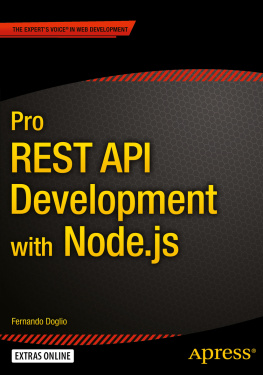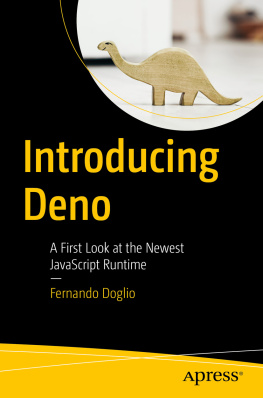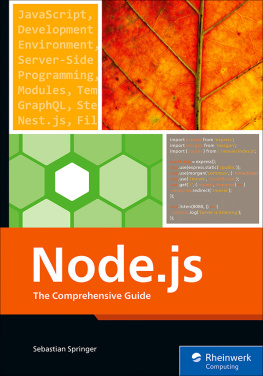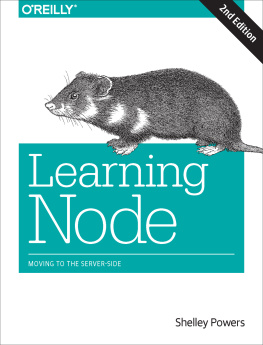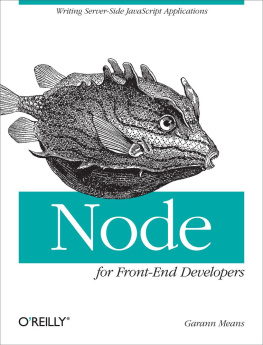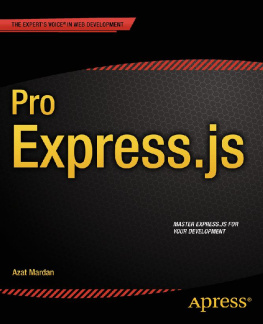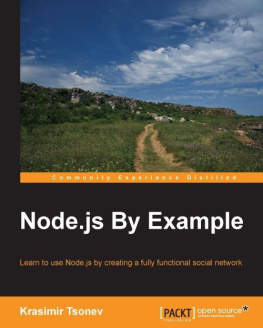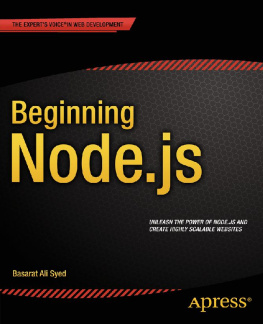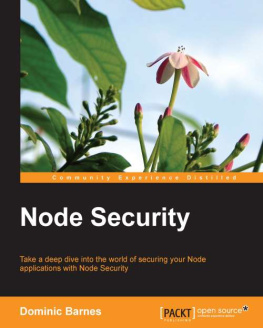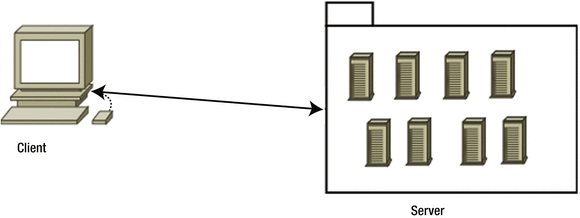Fernando Doglio - Pro REST API Development with Node.js
Here you can read online Fernando Doglio - Pro REST API Development with Node.js full text of the book (entire story) in english for free. Download pdf and epub, get meaning, cover and reviews about this ebook. year: 2015, publisher: Apress, genre: Computer. Description of the work, (preface) as well as reviews are available. Best literature library LitArk.com created for fans of good reading and offers a wide selection of genres:
Romance novel
Science fiction
Adventure
Detective
Science
History
Home and family
Prose
Art
Politics
Computer
Non-fiction
Religion
Business
Children
Humor
Choose a favorite category and find really read worthwhile books. Enjoy immersion in the world of imagination, feel the emotions of the characters or learn something new for yourself, make an fascinating discovery.
- Book:Pro REST API Development with Node.js
- Author:
- Publisher:Apress
- Genre:
- Year:2015
- Rating:3 / 5
- Favourites:Add to favourites
- Your mark:
Pro REST API Development with Node.js: summary, description and annotation
We offer to read an annotation, description, summary or preface (depends on what the author of the book "Pro REST API Development with Node.js" wrote himself). If you haven't found the necessary information about the book — write in the comments, we will try to find it.
Pro REST API Development with Node.js is your guide to managing and understanding the full capabilities of successful REST development. API design is a hot topic in the programming world, but not many resources exist for developers to really understand how you can leverage the advantages.
This book will provide a brief background on REST and the tools it provides (well known and not so well known). Understand how there is more to REST than just JSON and URLs. You will then cover and compare the maintained modules currently available in the npm community, including Express, Restify, Vatican, and Swagger. Finally you will code an example API from start to finish, using a subset of the tools covered.
The Node community is currently flooded with modules; some of them are published once and never updated again - cluttering the entire universe of packages. Pro REST API Development with Node.js shines light into that black hole of modules for the developers trying to create an API. Understand REST API development with Node.js using this book today.
What youll learn- What REST really is and how you can use it to your advantage.
- How to use a variety of modules including JSON/Hal, Express, Restify, Vatican, and Swagger.
- How to build an example RESTful API from start to finish.
- How to troubleshoot any problems and move on with your API.
This is book is designed for any Node.js developer who wants to fully understand REST API development. So often, the true capabilities of this method are not fully understood. This book will shed light on all aspects and make REST API development easy.
Table of ContentsIntroductionChapter One: REST 101
Chapter Two: API Design Best Practices
Chapter Three: Node.js and REST
Chapter Four: Architecting a REST API
Chapter Five: Working with Modules
Chapter Six: Planning Your REST API
Chapter Seven: Developing Your REST API
Chapter Eight: Troubleshooting
Fernando Doglio: author's other books
Who wrote Pro REST API Development with Node.js? Find out the surname, the name of the author of the book and a list of all author's works by series.

